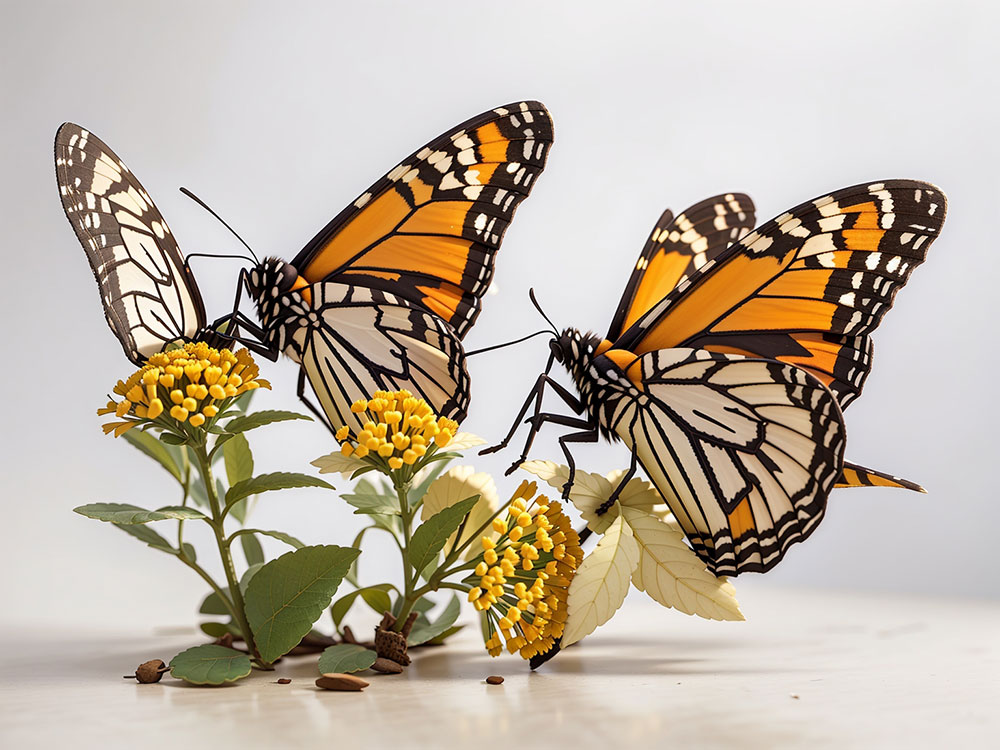Introduction to Monarch Butterflies
With their distinctive orange, black, and white wings, monarch butterflies (Danaus plexippus) captivate hearts worldwide. These small yet resilient creatures are not only iconic in the world of butterflies but also serve as vital indicators of our ecosystems’ health. As we witness their migratory marvels, it becomes evident that their survival is closely intertwined with the health of our planet.
The Majestic Monarchs: A Closer Look
Adult monarch butterflies stand out with their vibrant wings, adorned with intricate patterns of orange, black veins, and white accents. However, their enchanting appearance is just one facet of their fascinating existence. Every year, these butterflies embark on an incredible journey spanning 4,000 to 5,000 kilometers, traveling from southern Canada to the mountain forests of Mexico. This remarkable migration is a testament to their endurance and adaptability.
The Importance of Monarchs
Monarch butterflies are not just beautiful insects; they hold significant ecological and cultural value. In urban environments, they symbolize resilience, while in rural areas, they herald the arrival of summer. Beyond their symbolic significance, monarchs play a vital role in pollination and contribute to maintaining the delicate balance of our ecosystems.
Threats to Monarchs: A Call to Action
The future of monarch butterflies is under considerable threat due to a range of factors. Deforestation of their wintering habitats, disruptions caused by climate change on their migratory routes, and the loss of native plants, including milkweed species critical for their life cycle, all contribute to their decline. The increasing frequency of extreme weather events, attributed to rapid climate change, is further exacerbating their challenges.
The Role of Energy Efficiency in Monarch Conservation
While the challenges facing monarch butterflies are multifaceted, energy efficiency emerges as a powerful tool in their conservation. Climate change, driven by excessive energy consumption and greenhouse gas emissions, directly impacts their habitats and migratory patterns. By embracing energy-efficient practices and transitioning to renewable energy sources, we can contribute to mitigating climate change and its effects on these delicate creatures.
Reducing Carbon Footprint and Habitat Restoration
Energy conservation involves reducing our carbon footprint, which directly addresses the root causes of climate change. Additionally, habitat restoration efforts, including planting milkweed and nectar-producing native plants along migratory corridors, can provide vital resources for monarchs during their journey. By adopting these practices, we create environments that support the monarch life cycle and aid in their survival.
Conclusion
The plight of monarch butterflies highlights the interconnectedness of all living beings and ecosystems. As we witness their incredible migrations, we are reminded of the urgent need to protect their habitats and address climate change. By prioritizing energy efficiency, transitioning to renewable energy sources, and actively participating in habitat restoration, we can make a tangible impact on the survival of these magnificent creatures. Let us join hands to ensure that the monarch butterfly continues to grace our skies, inspiring generations to come.



Great article.